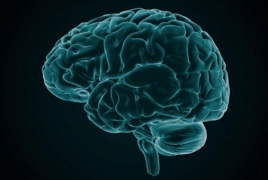
A new study being presented at the yearly conference of the Radiological Society of North America (RSNA) reports that MRI scanning of the brain shows signs of brain damage in obese adolescents – and that these signs could be the result of brain inflammation, News Medical reports.
The US is witnessing an unprecedented rise in obesity, both in young and old. Adolescent obesity has all the potential to become a huge public health problem. The percentage of obese individuals in childhood and adolescent having already increased by over 300% in the last fifty years, according to the statistics issued by the Centers for Disease Control and Prevention. The World Health Organization (WHO) reports that globally, obesity in infancy and young children below the age of 5 has gone up from about 32 million a year to about 41 million, between 1990 and 2016.
Obesity is linked to weight gain, abnormal blood sugar control, high blood lipid levels, hardening of the arteries, osteoarthritis and infertility, among a host of other medical conditions. However, the current study raises concern about the role of obesity in provoking inflammation within the nervous system that in turn results in damage to certain vital areas of the brain.
Magnetic resonance imaging (MRI) is a flexible and powerful tool for imaging the central nervous system. Contrast is often produced by measuring the degree to which the signal weakens due to the diffusion of water. In the current study, the researchers used an MRI method called diffusion tensor imaging (DTI) in which the passage of water by diffusion along the white matter bundles of the brain can be traced to outline these pathways. These bundles, or tracts, are important because they transmit nerve impulses, being composed of nerve fibers for the most part. Using DTI, direct evidence of damage can be picked up because this technique reflects microstructural and architectural changes in the brain matter.
Water diffuses inside, outside, around and through cell-based structures, and this movement is affected by the presence of cell membranes and organelles. For instance, a cell membrane forces the water to move more circuitously, reducing the displacement. In white matter, the diffusion occurs quite freely in a direction parallel to the orientation of the nerve fibers, but very little in a perpendicular direction. This is called anisotropic diffusion. It is described by an equation which yields a quantity called the diffusion tensor. This serves as a sensitive probe to sense normal and abnormal microstructure of tissue.
The researchers performed DTI in about 60 healthy and 60 obese teenagers, between the ages of 12 and 16 years. They used the results to calculate a measure called fractional anisotropy (FA) that corresponds to the state of health of the white matter of the brain. The lower the FA value, the greater the damage in the white matter.

